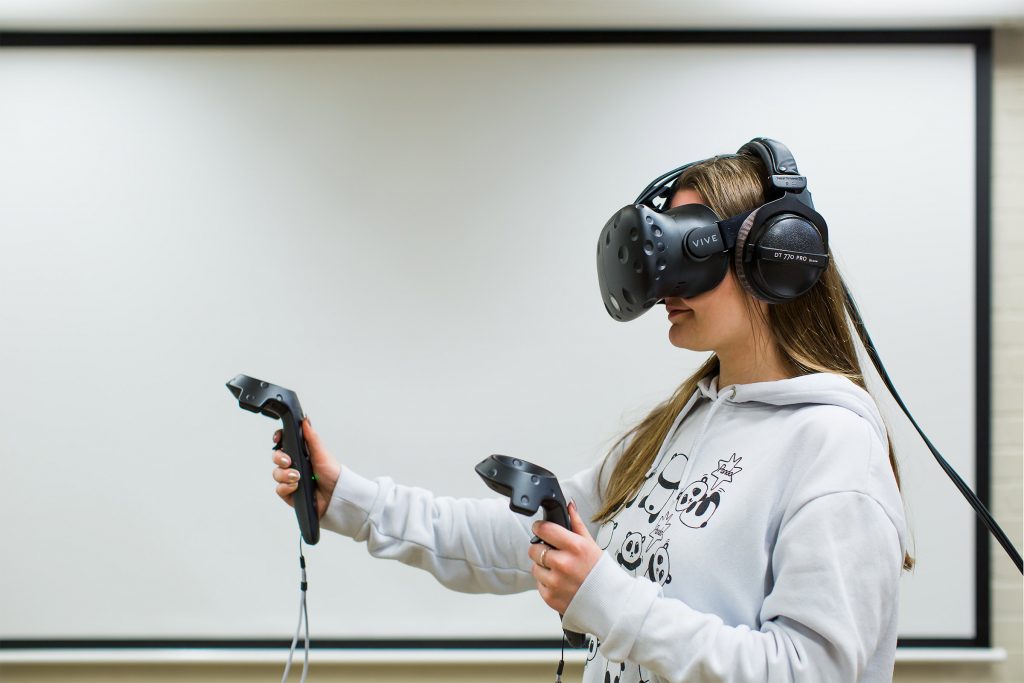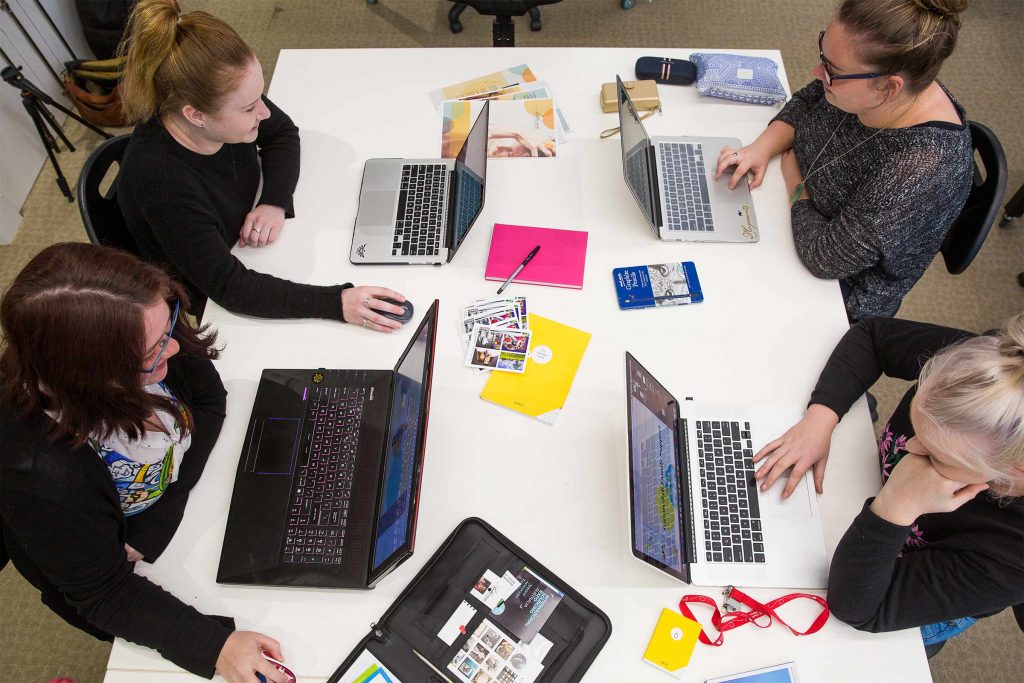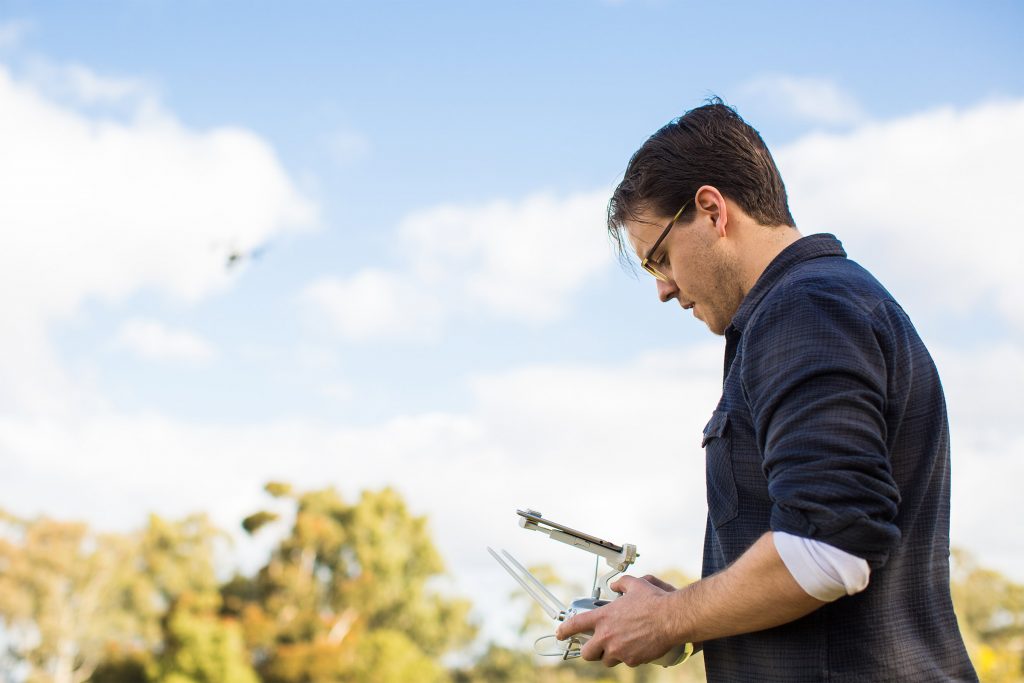The communication industry is all about telling stories. But how stories are told is constantly changing. Today, digital media, streaming services, mobile technology and artificial intelligence are all having a huge impact on how content is created, published and managed. Our series on the future of work in industries such as information technology, law enforcement and social work now turns to this creative field. We talked to two leading academics at Charles Sturt University about the future of communication. And how those working in communication can make sure their stories reach their audience.
Embracing technological disruption

One of the themes across our series has been the impact of technology on every industry. It seemed the perfect place to start our conversation.
Dr Travis Holland is a senior lecturer in communication at Charles Sturt University. He certainly sees technology as central to communication practice. Both now and in the future.
“Perhaps the major trend that we will continue to see influencing how the communication industry will change is the pervasive nature of the internet. However, communication is often at the forefront of changes that the internet has gone through. And it will continue to be so in the future. Everything is transferring online. Even more so following the COVID pandemic. And the internet will continue to be the predominant delivery mode for all sorts of media.
“Creatives need to pay attention to the way the internet is governed. And how material they put or access online is owned. They will also need to think about how to use technology creatively to access audiences – to put their work in front of the people that want to see it. And they must be aware of misinformation, to have the capability to assess and find their way towards something resembling the truth. So data analysis and data visualisation are becoming important skills nowadays.
“Technology also opens up lots of opportunities for sharing creativity. Audiences may be niche on the internet, but those niches can be very large, with interests being serviced from around the world. Being able to find access to those groups is a very important skill – and offers great visibility for creative ideas.”
Tech skills open up opportunities
For some industries, the progress of automation as technology becomes more integrated has been heralded as a negative development for workers. However, people such as Chris Orchard, Associate Dean and an interdisciplinary researcher at Charles Sturt, sees it as a boon for creative professionals. He feels it can open up both learning and future career opportunities.
“We know that we are one of the future industries where automation will augment – rather than replace – how we work as creative people. There already is a great deal of automation taking place. For instance multiple cameras for live productions managed remotely rather than one camera person, one camera. It just changes what jobs are available. You will need network engineers and coders, but you also need people who can frame a good shot, it requires a blend of creatives and IT professionals to bring the technology together. These are still creative people, but the skills are shifting to take account of technological disruption. The skills remain the same – you are still researching, assessing information and ultimately telling stories.”
The future of communication will mean working across disciplines

The shifts in the way that content, communications and creative products are produced and delivered means that, as Mr Orchard sees it, the various specialisations in the industry are becoming increasingly intertwined.
“Where we’re headed is certainly more interdisciplinary. Take acting and performance. While some traditions for acting for the stage remain (besides some incorporation of technologies like projection or hardware-based interactivity into performance), we also need to prepare graduates for a whole range of other acting opportunities, often linked to technology. For instance, acting for virtual and augmented reality applications, acting for game design, acting for animation, and so on, each of which requires a specific skill set. Acting for 360-degree video, for instance, demands an incredibly high level of physical and mental aptitude to remain aware of your body in the environment. This means that professionals can move into lots of new interesting spaces. Places where disciplines come together, and skills are shared.”
Multidisciplinary learning
Dr Holland explains that this notion of working across disciplines is increasingly in demand, and shaping education for future professionals.
“We take a multimedia approach to learning. So in a journalism specialisation, for instance, you get to work in audio, video and web newsrooms. Everything is becoming more interdisciplinary and more project-focused to get industry-relevant experience. We also have digital media production as a specialisation, which produces graduates who have skills across forms – video, audio, content, technical ability – and means opportunities can open up across organisations – from media organisations and PR business to a radio network or sporting club.
“Collaborating with professionals working across channels will also be important, in order to maximise audience reach. Collaboration is a skill that is becoming increasingly central to how communication and creative professionals do their work. Often the audience is also part of the team. The internet allows rapid feedback from viewers (whether through comments, likes, shares and so on), which can influence what is produced next in that space.”
Applying creativity beyond traditional industries
With this broadening of experience, knowledge and expertise comes a greater range of professional opportunities for creative people, as Mr Orchard describes.
“Creative skills are in demand across every industry, not just the traditionally creative ones. This is a combination of needing creative thinkers to solve problems, and also creatives to help all organisations engage with their audience in a world where the internet is so embedded in everyday life. Organisations need people to unearth, tell and package stories for their audiences; but equally thinking creatively you have people who can provide insight across the whole business value chain. The collaborative capacity of the industries can add value to any workforce.
“More and more creative people are finding work in what were traditionally non-creative industries. So creatives are increasingly moving to what we call an ‘embedded model’ of work. For instance, a creative media professional might hold a position with, say, Roads and Maritime Services. We wouldn’t ordinarily think of PricewaterhouseCoopers as a production house of creative content,. However, they also have their own in-house digital innovation, hackers, design thinking and VR/AR [virtual reality / augmented reality] specialists. Similarly, most councils now all have their own in-house media teams, too. Where communication specialists are finding work, really is everywhere.”
It’s a trend Dr Holland also sees occurring in the communication sector. The way organisations and individuals think about content will inform these changes.
“The communication industry is becoming much more creative and moving beyond traditional borders of, say, ‘this is a journalistic report’. We use information more fluidly across forms. This will see more people moving between sectors during their careers, perhaps from PR into journalism and other forms of creative writing.”
Creating vibrant regional industries
Applying creativity across a wide range of industries is also resulting in lots of location-specific opportunities for creative people. That’s particularly the case in regional areas, as Mr Orchard explains.
“Communication technology certainly means professionals can collaborate nationally and internationally. Therefore, they can live anywhere. This can mean they move to regional areas. There the cost of living and business overheads are lower than in the major cities.
“But what’s really interesting is that regional centres are becoming hubs as specific creative ecosystems are emerging to meet particular local needs (much like many courses at regional universities develop in response to industry needs). So, for instance, in Wagga Wagga, creative individuals and businesses are working closely with the agriculture and agritech sector to answer global problems. In Port Macquarie, there is a lot of drive to combine creative thinking with the environmental sciences, in study and in the community.
“Everyone from agricultural scientists to ecotourism businesses in these areas have stories to tell. But they need individuals to help them tell them in a way that really engages their audience.”
Keeping up with the speed of change in the future of communication

In industries that are so dynamic, and in which new opportunities and technological possibilities are constantly emerging, Dr Holland feels that people working in the communication and creative industries will need to keep positioning themselves at the forefront of what is possible and ride the wave of change in the future of communication.
“Professionals will need to be hungry to learn new skills, to keep on top of rapid developments. Take drones; now all major media organisations use them. So journalists need to use drones and apply journalistic ethics to their use. Even a few years ago, the industry did not even consider this as a requirement.”
Mr Orchard gives another example that demonstrates how quickly the industry – and those working in it – can change.
“People who thrive on challenges can adapt to the change and disruption in the industry that will continue to happen. Being a lifelong learner will position professionals to take the best advantage of change in the future of communication. For example, 10 years ago digital SLR cameras started being able to shoot video. Overnight, many commercial photographers were expected to be videographers, as well as take stills. Now, a photographer who doesn’t also know how to work remotely with drones is almost unheard of. Organisations are now expecting you to have all that facility for image capture on hand.”
We’ll always need stories
Dr Holland feels that going forward, opportunities for professionals already in, or choosing to enter, the profession will remain broad.
“The through line of any communication professional’s work is the ability to tell compelling stories. And that’s always been the case – whether in print, on the stage, and now online. You are telling human stories to other humans, and finding ways to get stories to people – using technology to do that – remains key.”
Mr Orchard concurs.
“The common thread within the future of communication is people able to tell stories. Increasingly, graduates will be telling these stories through multiple platforms and channels of media. And graduates will be able to thrive, and pursue their creative ideas, across any industry. Ultimately, I want our students to be the disruptors.”
Ready to shape the future of communication?
If you want to work at the cutting edge of creativity, we’re here to help. We’ve revamped our Bachelor of Communication1, so you can make your ideas a reality. Dynamic courses with digital media and interdisciplinary practice at their heart? It’s what we do.
1Cricos: 0101020
Contributors

Dr Travis Holland is a senior lecturer in communication at Charles Sturt University. He teaches subjects on digital media, research strategies and communication theory. His research interests include fan studies, politics, digital media, television and local government.

Christopher Orchard is Associate Dean in the Faculty of Arts and Education at Charles Sturt University. His research draws from a wide field of discourse on contemporary creative industries practices, natural resource management, trauma studies, eco-psychology, decolonisation and environmental ethics to generate new creative dialogues.


You must be logged in to post a comment.